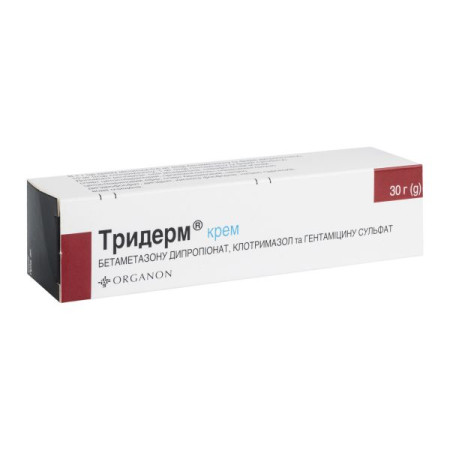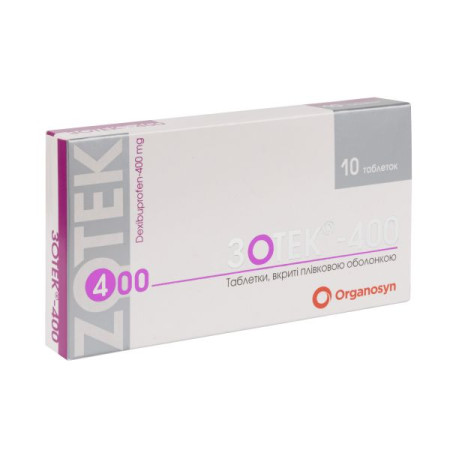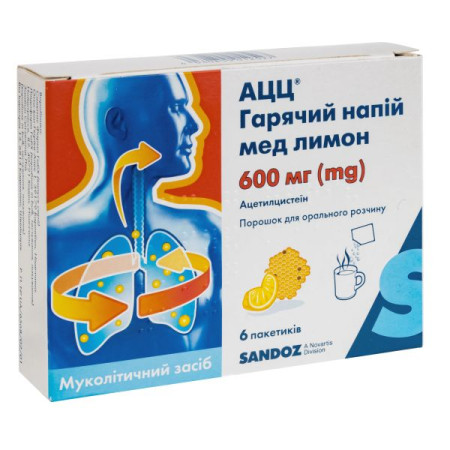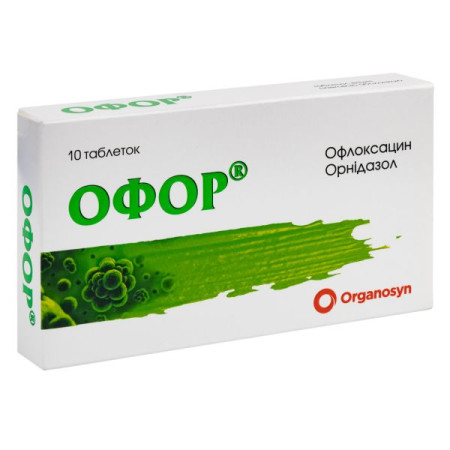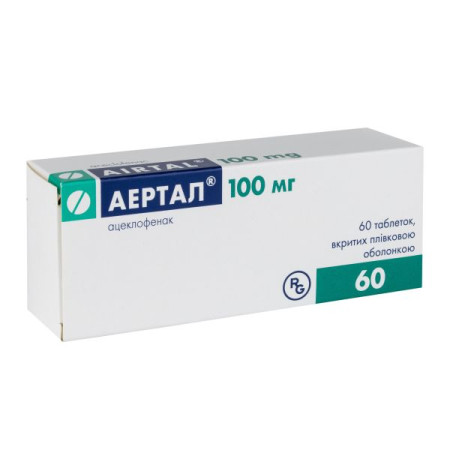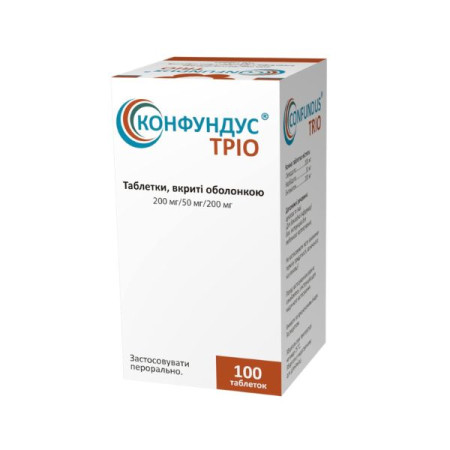Denovel 30 film-coated tablets 0.03 mg + 2 mg blister No. 21

Instructions Denovel 30 film-coated tablets 0.03 mg + 2 mg blister No. 21
Composition
active ingredients: ethinylestradiol, dienogest;
1 film-coated tablet contains ethinylestradiol 0.03 mg and dienogest 2 mg;
excipients: lactose monohydrate, corn starch, maltodextrin, magnesium stearate, white film-coating mixture (hypromellose, lactose monohydrate, titanium dioxide (E171), macrogol 4000, sodium citrate).
Dosage form
Film-coated tablets.
Main physicochemical properties: round tablets, film-coated, white in color without coating defects.
Pharmacotherapeutic group
Hormonal contraceptives for systemic use. Progestogens and estrogens in combination. ATX code G03A A16.
Pharmacological properties
Pharmacodynamics
All hormonal contraceptive methods have a very low contraceptive failure rate when used according to instructions. Contraceptive failure rates may be higher if contraceptives are not used according to instructions (e.g., missing a pill).
Denovel® 30 is a combined oral contraceptive (COC) with ethinylestradiol and the progestogen dienogest.
The contraceptive effect of Denovel® 30 is based on the interaction of various factors, the most important of which are the suppression of ovulation and changes in cervical secretion.
During clinical studies, the following Pearl index was calculated:
unadjusted Pearl index: 0.454 (upper 95% confidence interval (CI): 0.701); adjusted Pearl index: 0.182 (upper 95% confidence interval: 0.358).
Dienogest is a nortestosterone derivative with an in vitro affinity for the progesterone receptor that is 10–30 times lower than that of other synthetic progestogens. In vivo animal data indicate strong progestogenic activity and antiandrogenic activity. Dienogest does not exhibit significant androgenic, mineralocorticoid, or glucocorticoid activity in vivo.
The dose of dienogest that leads to ovulation suppression is 1 mg/day.
The risk of endometrial and ovarian cancer is reduced with the use of high-dose COCs (50 mcg ethinylestradiol). Whether this also applies to low-dose COCs remains unclear.
Pharmacokinetics
Ethinylestradiol
Adsorption: Ethinylestradiol is rapidly and completely absorbed after oral administration. Peak serum concentrations of approximately 67 pg/mL are reached within 1.5–4 hours. Ethinylestradiol is extensively metabolized during absorption and first-pass metabolism, resulting in a mean oral bioavailability of approximately 44%.
Distribution: Ethinylestradiol binds strongly but non-specifically to serum albumin (approximately 98%) and induces an increase in serum concentrations of sex steroid binding globulin (SSGB). The apparent volume of distribution of ethinylestradiol is approximately 2.8–8.6 l/kg.
Metabolism. Ethinylestradiol undergoes presystemic conjugation in the small intestinal mucosa and in the liver. Ethinylestradiol is metabolized mainly by aromatic hydroxylation, but a large number of hydroxylated and methylated metabolites are additionally formed, among which there are both free metabolites and conjugates with glucuronides and sulfates. Clearance is 2.3–7 ml/min/kg.
Elimination. Serum ethinylestradiol levels decline in a biphasic manner with half-lives of approximately 1 hour and 10–20 hours, respectively. Ethinylestradiol is not eliminated unchanged; its metabolites are excreted in the urine and bile in a ratio of 4:6. The half-life of the metabolites is approximately one day.
Steady state: Steady state is reached during the second half of the dosing cycle, when serum ethinylestradiol concentrations are approximately twice those after a single dose.
Dienogest.
Absorption. After oral administration, dienogest is rapidly and completely absorbed. The maximum serum concentration is reached within 2.5 hours after a single oral dose of the drug and is 51 ng/ml. The absolute bioavailability of dienogest in combination with ethinylestradiol is approximately 96%.
Distribution: Dienogest is bound to serum albumin and does not bind to GCS or corticoid-binding globulin (CBG). Only 10% of dienogest in serum is found as free steroid, and 90% is nonspecifically bound to albumin. The ethinylestradiol-induced increase in GCS does not affect the binding of dienogest to serum proteins. The apparent volume of distribution of dienogest is in the range of 37 to 45 liters.
Excretion. The serum level of dienogest decreases with a half-life of about 9 hours. Only a small amount of dienogest is excreted unchanged by the kidneys. After an oral dose of 0.1 mg/kg body weight, the ratio of renal to fecal excretion is 3:2. About 86% of the administered dose is excreted within 6 days, the majority, 42%, is excreted in the urine in the first 24 hours.
Steady state. The pharmacokinetics of dienogest are independent of the level of GSH. With daily use, the concentration of the substance in the blood serum increases by 1.5 times, reaching a steady state after 4 days of use.
Preclinical safety data
Preclinical studies of ethinylestradiol and dienogest have shown the expected estrogenic and progestogenic effects.
The results of conventional non-clinical studies of repeated dose toxicity, genotoxicity, carcinogenicity and reproductive toxicity do not indicate any specific risk to humans. However, it should be noted that sex steroids may promote the growth of certain pre-existing hormone-dependent tissues and tumors.
Indication
Oral contraception.
Contraindication
Combined oral contraceptives (COCs) should not be used if any of the following conditions are present. If any of these conditions or diseases appear for the first time during COC use, the drug should be discontinued immediately.
Presence of risk factors for venous thromboembolism (VTE): venous thromboembolism – current VTE (when using anticoagulants) or history of VTE (e.g. deep vein thrombosis (DVT) or pulmonary embolism (PE); known hereditary or acquired predisposition to venous thromboembolism, such as resistance to activated protein C (including factor V Leiden mutation), antithrombin III deficiency, protein C deficiency, protein S deficiency;
major surgical interventions with prolonged immobilization (see section "Special instructions for use");
high risk of venous thromboembolism due to the presence of multiple risk factors (see section "Special warnings and precautions for use").
Presence of risk factors for arterial thromboembolism (ATE): arterial thromboembolism – current arterial thromboembolism, history of arterial thromboembolism (e.g. myocardial infarction) or prodromal state (e.g. angina); cerebrovascular disease – current stroke, history of stroke or prodromal state (e.g. transient ischemic attack (TIA); known hereditary or acquired predisposition to arterial thromboembolism, such as hyperhomocysteinemia and the presence of phospholipid antibodies (anti-cardiolipin antibodies, lupus anticoagulant); history of migraine with focal neurological symptoms;
high risk of arterial thromboembolism due to the presence of multiple risk factors (see section "Special warnings and precautions for use") or the presence of one risk factor, such as:
Diabetes mellitus with vascular symptoms; Severe hypertension; Severe dyslipoproteinemia. Pancreatitis, including a history if associated with severe hypertriglyceridemia. Current or history of severe liver disease until liver function tests return to normal. Current or history of liver tumors (benign or malignant). Known or suspected malignant neoplasms (e.g., genitals or mammary glands) that are affected by sex steroid hormones. Known or suspected pregnancy. Undiagnosed vaginal bleeding.
Concomitant use with medicinal products containing ombitasvir/paritaprevir/ritonavir and dasabuvir (see sections “Interaction with other medicinal products and other types of interactions” and “Special precautions for use”).
Hypersensitivity to the active substances or to any of the components of the drug.
Interaction with other medicinal products and other types of interactions
Note: In order to identify possible interactions, you should read the instructions for use of drugs taken simultaneously with this drug.
Effect of other drugs on Denovel® 30
Interactions may occur with drugs that induce the activity of microsomal enzymes, which may cause increased clearance of sex hormones and lead to intermenstrual bleeding and/or loss of contraceptive efficacy.
Treatment tactics
Enzyme induction can be observed within a few days of treatment. Typically, maximum enzyme induction can be observed within a few weeks. After discontinuation of drug therapy, enzyme induction can persist for approximately 4 weeks.
Women taking enzyme-inducing drugs should temporarily use a barrier method or another method of contraception in addition to the COC. The barrier method should be used throughout the entire period of treatment with the drug and for 28 days after stopping its use. If therapy is started during the last COC tablet period, then the next COC pack should be started immediately after the previous pack is finished without the usual tablet-free interval.
Long-term treatment
Women undergoing long-term treatment with active substances that induce liver enzymes are recommended to use another reliable non-hormonal method of contraception.
Substances that enhance the clearance of PDA (reduce the effectiveness of PDA by inducing enzymes), for example:
barbiturates, carbamazepine, phenytoin, primidone, rifampicin, and possibly oxcarbazepine, topiramate, felbamate, griseofulvin, and preparations containing the herbal medicine St. John's wort (Hypericum perforatum).
Substances with variable effects on PDA clearance
When administered concomitantly with COCs, many combinations of protease inhibitors and non-nucleoside reverse transcriptase inhibitors used to treat HIV/hepatitis C virus may increase or decrease plasma concentrations of estrogen or progestin. In some cases, the cumulative effect of these changes may be clinically significant.
Therefore, the Summary of Product Characteristics of concomitant HIV/HCV medicinal products should be consulted to identify possible interactions and provide any appropriate advice. In case of any doubt, women treated with a protease inhibitor or non-nucleoside reverse transcriptase inhibitor should use an additional barrier method of contraception.
Substances that reduce the clearance of PDA (enzyme inhibitors)
The clinical significance of potential interactions with enzyme inhibitors remains unknown. Concomitant use of potent CYP3A4 inhibitors may increase plasma concentrations of estrogen or progestin, or both. Etoricoxib at doses of 60-120 mg/day has been shown to increase plasma concentrations of ethinyl estradiol by 1.4- to 1.6-fold, respectively, when co-administered with a combined hormonal contraceptive containing 35 mcg of ethinyl estradiol.
Effect of Denovel® 30 on other medicines
COCs may affect the metabolism of other active substances. Accordingly, plasma and tissue concentrations may increase (e.g. cyclosporine) or decrease (e.g. lamotrigine).
However, based on in vitro data, inhibition of CYP enzyme activity by dienogest is unlikely when used at therapeutic doses.
Clinical data indicate that ethinylestradiol inhibits the clearance of CYP1A2 substrates, causing a slight (e.g. theophylline) or moderate (e.g. tizanidine) increase in their plasma concentrations.
Other types of interaction
Laboratory tests
The use of contraceptive steroids may affect the results of some laboratory tests, including biochemical parameters of liver, thyroid, adrenal and renal function, plasma levels of (carrier) proteins, e.g. corticosteroid-binding globulin and lipid/lipoprotein fractions, parameters of carbohydrate metabolism and parameters of coagulation and fibrinolysis. Changes usually remain within the range of normal laboratory values.
Pharmacodynamic interactions
Concomitant use with medicinal products containing ombitasvir/paritaprevir/ritonavir and dasabuvir, with or without ribavirin, may increase the risk of ALT elevations (see sections 4.3 and 4.4). Therefore, patients taking Denovel® 30 should switch to an alternative method of contraception (e.g. progestogen-only contraception or non-hormonal methods of contraception) before starting treatment with this combination medicinal product regimen. Treatment with Denovel® 30 can be resumed 2 weeks after completing treatment with this combination medicinal product regimen.
Application features
Warning
If any of the conditions or risk factors listed below are present, the appropriateness of using Denovel® 30 should be discussed with the woman.
In case of exacerbation or at the first manifestations of any of these conditions or risk factors, women are advised to consult a doctor and determine the need to discontinue the use of Denovel® 30.
In case of suspected or confirmed VTE or ATE, COC use should be discontinued. If anticoagulant therapy is initiated, alternative adequate contraception should be provided due to the teratogenic effects of anticoagulants (coumarins).
Circulatory disorders
The use of any COC increases the risk of venous thromboembolism (VTE) in women who use them compared with those who do not use them. Products containing levonorgestrel, norgestimate or norethisterone are associated with the lowest risk of VTE. The risk of using Denovel® 30 compared with products with a lower risk is currently unknown. The decision to use a product other than those with the lowest risk of VTE should only be made after discussion with the woman. She should be made sure that she is aware of:
the risk of VTE associated with the use of Denovel® 30; the extent of the influence of existing risk factors; that the risk of VTE is highest during the first year of COC use. According to some data, the risk of VTE may increase when COC use is resumed after a break of 4 weeks or more.
About 2 in 10,000 women who are not using CHCs and are not pregnant will develop VTE in one year. However, the risk for an individual woman may be much higher, depending on the risk factors she has (see below).
Epidemiological studies in women using low-dose (<50 μg ethinylestradiol) COCs have shown that out of 10,000 women, 6–12 women will develop VTE within 1 year.
It is estimated that out of 10,000 women who use CHCs containing levonorgestrel, about 61 women will develop VTE within one year.
It is estimated that out of 10,000 women who use a CHC containing dienogest and ethinylestradiol, approximately 8-11[1] will develop VTE over 1 year.
The reported incidence of VTE per year was lower than expected during pregnancy or in the postpartum period.
VTE can be fatal in 1–2% of cases.
Thrombosis in other blood vessels, such as the arteries and veins of the liver, kidneys, mesenteric vessels or retinal vessels, has been reported extremely rarely in women using COCs.
Risk factors for VTE
The risk of developing venous thromboembolic complications in women using COCs may be significantly higher in the presence of additional risk factors, especially multiple ones (see Table 1).
Denovel® 30 is contraindicated in women with multiple risk factors that may increase the risk of venous thrombosis (see section "Contraindications"). If a woman has more than one risk factor, the increased risk may be greater than the sum of the risks associated with each individual factor, so the overall risk of VTE should be taken into account. If the benefit/risk ratio is unfavorable, COCs should not be prescribed (see section "Contraindications").
Table 1: Risk factors for VTE
| Risk factor | Note |
| Obesity (body mass index greater than 30 kg/m²) | The risk increases significantly with increasing body mass index. It especially requires attention in the presence of other risk factors. |
Prolonged immobilization, major surgery, any surgery on the lower extremities or pelvic organs, neurosurgery, or extensive trauma. Note: Temporary immobilization, including air travel lasting >4 hours, may also be a risk factor for VTE, particularly in women with other risk factors. | In such situations, it is recommended to discontinue use of the drug (in the case of elective surgery at least 4 weeks in advance) and not resume use earlier than 2 weeks after full recovery of motor activity. In order to avoid unwanted pregnancy, other methods of contraception should be used. Antithrombotic therapy should be considered if the drug has not been discontinued beforehand. |
| Family history (venous thromboembolism ever in a sibling or parent, especially at a relatively young age, e.g., under 50 years of age). | If a hereditary predisposition is suspected, women are advised to consult a specialist before using any COCs. |
| Other conditions associated with VTE | Cancer, systemic lupus erythematosus, hemolytic uremic syndrome, chronic inflammatory bowel disease (Crohn's disease or ulcerative colitis), and sickle cell anemia. |
| Increasing age | Especially over the age of 35. |
There is no consensus on the possible influence of varicose veins and superficial thrombophlebitis on the onset or development of venous thrombosis.
Attention should be paid to the increased risk of thromboembolism during pregnancy, especially within 6 weeks after delivery (for information on pregnancy and lactation, see section "Use during pregnancy or breastfeeding").
Symptoms of VTE (deep vein thrombosis and pulmonary embolism)
Women should be advised to contact their doctor immediately if they experience the following symptoms and to inform them that they are using COCs.
Symptoms of deep vein thrombosis (DVT) may include:
unilateral swelling of the thigh, lower leg and/or foot or an area along a vein in the leg; pain or increased sensitivity in the leg that may only be felt when standing or walking; a feeling of heat in the affected leg; redness or discoloration of the skin on the leg.
sudden unexplained shortness of breath or rapid breathing; sudden cough, possibly with blood; sudden chest pain; severe dizziness or loss of balance; fast or irregular heartbeat.
Some of these symptoms (e.g., shortness of breath, cough) are nonspecific or may be misinterpreted as more common or less severe conditions (e.g., respiratory tract infections).
Other manifestations of vascular occlusion may include sudden pain, swelling, and slight blueness of the limb.
In the case of occlusion of the vessels of the eye, the initial symptom may be blurred vision, which is not accompanied by pain and can progress to loss of vision. Sometimes the loss of vision develops almost instantly.
Risk of arterial thromboembolism (ATE)
Epidemiological studies have shown that the use of any COC is associated with an increased risk of arterial thromboembolism (myocardial infarction) or cerebrovascular events (e.g. transient ischemic attack, stroke). Arterial thromboembolic events can be fatal.
Risk factors for ATE
The risk of arterial thromboembolic complications or cerebrovascular events is increased in women with risk factors when using COCs (see Table 2). The use of the drug is contraindicated if women have one serious or multiple risk factors for ATE that may increase the risk of arterial thrombosis (see section "Contraindications"). If a woman has more than one risk factor, the increased risk may be greater than the sum of the risks associated with each individual factor, so the overall risk should be taken into account. If the benefit/risk ratio is unfavorable, COCs should not be prescribed (see section "Contraindications").
Table 2: Risk factors for ATE
| Risk factor | Note |
| Increasing age | Especially over the age of 35 |
| Smoking | Women using COCs are advised to abstain from smoking. Women over 35 who continue to smoke are strongly advised to use another method of contraception. |
| Arterial hypertension | |
| Obesity (body mass index greater than 30 kg/m²) | The risk increases significantly with increasing body mass index. This is especially important if women have other risk factors. |
| Family history (arterial thromboembolism in a sibling or parent, especially at a relatively young age, e.g., under 50 years of age) | If a hereditary predisposition is suspected, women are advised to consult a specialist before using any COCs. |
| Migraine | An increase in the frequency or severity of migraine during COC use (possible prodromal states before the development of cerebrovascular events) may be a reason for immediate discontinuation of COC use. |
| Other conditions associated with adverse vascular reactions. | Diabetes mellitus, hyperhomocysteinemia, heart valve defects, atrial fibrillation, dyslipoproteinemia, and systemic lupus erythematosus. |
Symptoms of ATE
Women should be advised to seek medical advice immediately if they experience such symptoms and to inform their doctor that they are using COCs.
Symptoms of a cerebrovascular accident may include:
sudden numbness or weakness of the face, arm or leg, especially on one side; sudden trouble walking, dizziness, loss of balance or coordination; sudden confusion, trouble speaking or understanding; sudden loss of vision in one or both eyes; sudden, severe or prolonged headache with no known cause; loss of consciousness or fainting with or without seizures.
The transient nature of the symptoms may indicate a transient ischemic attack (TIA).
Symptoms of a myocardial infarction may include:
pain, discomfort, heaviness, heaviness, a feeling of squeezing or fullness in the chest, arm or below the breastbone; discomfort radiating to the back, jaw, throat, arm, stomach; feeling of fullness in the stomach, indigestion or shortness of breath; increased sweating, nausea, vomiting or dizziness; extreme weakness, anxiety or shortness of breath; fast or irregular heartbeat.
Tumors
The results of some epidemiological studies indicate an additional increase in the risk of developing cervical cancer with long-term use of COCs, but this statement remains controversial, since it is not yet clear to what extent the results of the studies take into account concomitant risk factors, such as sexual behavior or the presence of human papillomavirus infection.
In isolated cases, benign and even more rarely malignant liver tumors have been observed in women using COCs, which in some cases led to life-threatening intra-abdominal bleeding. In case of complaints of severe pain in the epigastric region, liver enlargement or signs of intra-abdominal bleeding, the possibility of a liver tumor should be considered in the differential diagnosis when using COCs.
Neoplasms can be life-threatening or fatal.
Other states
Women with hypertriglyceridemia or a family history of this disorder are at risk of developing pancreatitis when using COCs.
Although a slight increase in blood pressure has been reported in many women taking COCs, a clinically significant increase in blood pressure is rare. However, if persistent clinically significant hypertension develops during COC use, COC use should be discontinued and the hypertension treated. If appropriate, COC use may be resumed after blood pressure has been normalized with antihypertensive therapy. COC use should be discontinued if, during their use for hypertension diagnosed before COC use, persistently high blood pressure values persist despite adequate antihypertensive therapy.
The following conditions have been reported to occur or worsen during pregnancy and COC use, but the relationship between the two conditions and COC use is not conclusive: jaundice and/or pruritus associated with cholestasis; gallstone formation; porphyria; systemic lupus erythematosus; haemolytic uraemic syndrome; Sydenham's chorea; herpes gestationis; hearing loss associated with otosclerosis.
In women with a hereditary predisposition to angioedema, exogenous estrogens may induce or exacerbate symptoms of angioedema.
In acute or chronic liver dysfunction, it may be necessary to discontinue COC use until liver function tests return to normal. In the event of recurrence of cholestatic jaundice and/or pruritus associated with cholestasis, which first occurred during pregnancy or previous use of sex hormones, COC use should be discontinued.
Although COCs may affect peripheral insulin resistance and glucose tolerance, there is no evidence to suggest that diabetic women taking low-dose COCs (<0.05 mg ethinylestradiol) should be monitored closely during COC use, especially at the beginning of use.
Cases of exacerbation of endogenous depression, epilepsy, Crohn's disease and ulcerative colitis have also been observed during the use of COCs.
Mood swings and depression are well-known side effects of hormonal contraceptives (see section 4.8). Depression can be serious and is a known risk factor for suicidal behaviour and suicide. Women should seek medical advice if they experience mood swings and depressive symptoms, including shortly after starting treatment.
Chloasma may occasionally occur, especially in women with a history of chloasma during pregnancy. Women prone to chloasma should avoid exposure to direct sunlight or ultraviolet radiation while using COCs.
Elevated ALT
In clinical trials in patients treated for hepatitis C (HCV) infection with the medicinal products containing ombitasvir/paritaprevir/ritonavir and dasabuvir with or without ribavirin, significantly increased transaminase (ALT) levels exceeding the upper limit of normal (ULN) occurred more frequently in women using ethinylestradiol-containing products such as combined hormonal contraceptives (CHCs) (see sections 4.3 and 4.5).
Each tablet contains 48.53 mg of lactose monohydrate. If you have been told by your doctor that you have an intolerance to some sugars, contact your doctor before taking this medicine. Patients with rare hereditary problems of galactose intolerance, the Lapp lactase deficiency or glucose-galactose malabsorption should not take this medicine.
This medicinal product contains 23 mg of sodium citrate per tablet. Caution should be exercised when used in patients on a controlled sodium diet.
Medical examination/consultation
Women are advised to carefully read the instructions for medical use of the medicinal product and follow the recommendations contained therein. The frequency and nature of the examinations should depend on the established treatment protocols and be adapted to each individual woman.
Women should be warned that hormonal contraceptives do not protect against HIV infection (AIDS) and any other sexually transmitted diseases.
Decreased efficiency
The effectiveness of COCs may be reduced in the event of missed tablets (see section "Method of administration and dosage"), gastrointestinal disorders (see section "Method of administration and dosage") or concomitant use of other medicines (see section "Interaction with other medicines and other types of interactions").
Cycle disruption
With all COCs, irregular bleeding (spotting or breakthrough bleeding) may occur, especially during the first few months. Therefore, any irregular bleeding should only be assessed after a period of adaptation to the drug (usually after 3 cycles of taking the pill).
If irregular bleeding persists after a period of adaptation or occurs after a period of regular bleeding, non-hormonal causes of bleeding should be considered and appropriate diagnostic measures should be taken, including examination to exclude tumors or pregnancy. Diagnostic measures may include curettage.
Some women may not have a withdrawal bleed during the tablet-free interval. If the COC is used according to the instructions in section 4.2, pregnancy is unlikely. However, if COC use was irregular before the first missed withdrawal bleed or if two withdrawal bleeds are missed, pregnancy must be ruled out before COC use is continued.
Ability to influence reaction speed when driving vehicles or other mechanisms
Studies of the effect of the drug on the ability to concentrate when driving vehicles and operating machines and mechanisms have not been conducted. In people taking PDA, the effect of PDA on the ability to concentrate when driving vehicles and operating machines and mechanisms has not been observed.
Use during pregnancy or breastfeeding
The drug is contraindicated during pregnancy.
In case of pregnancy, the use of the drug must be discontinued immediately.
The results of epidemiological studies do not indicate an increased risk of birth defects in children whose mothers took oral contraceptives before pregnancy, nor the possibility of teratogenic effects if oral contraceptives were inadvertently taken in early pregnancy.
Animal studies have shown adverse effects during pregnancy and lactation. Based on these animal studies, adverse effects due to the active compounds cannot be excluded. However, the general experience with COCs during pregnancy has not provided evidence of actual adverse effects in humans.
The increased risk of VTE in the postpartum period should be taken into account when resuming Denovel® 30 (see sections “Method of administration and dosage” and “Special precautions for use”).
COCs may affect lactation because they may reduce the amount and change the composition of breast milk. During COC use, small amounts of contraceptive steroids and/or their metabolites may be excreted in the milk. These amounts may affect the child. Therefore, Denovel® 30 is not recommended for use until the breastfeeding period is complete.
Method of administration and doses
For oral use.
Dosage
How to take Denovel® 30
Take 1 tablet daily for 21 consecutive days at approximately the same time, if necessary with a small amount of liquid, in the order specified on the blister. Tablets from each subsequent package should be started after a seven-day break in taking the drug, during which withdrawal bleeding should occur. As a rule, withdrawal bleeding begins on the 2nd-3rd day after taking the last tablet and may not end before the start of the next package.
How to start treatment with Denovel® 30
If hormonal contraceptives in the previous period (last month
There are no reviews for this product.
There are no reviews for this product, be the first to leave your review.
No questions about this product, be the first and ask your question.






